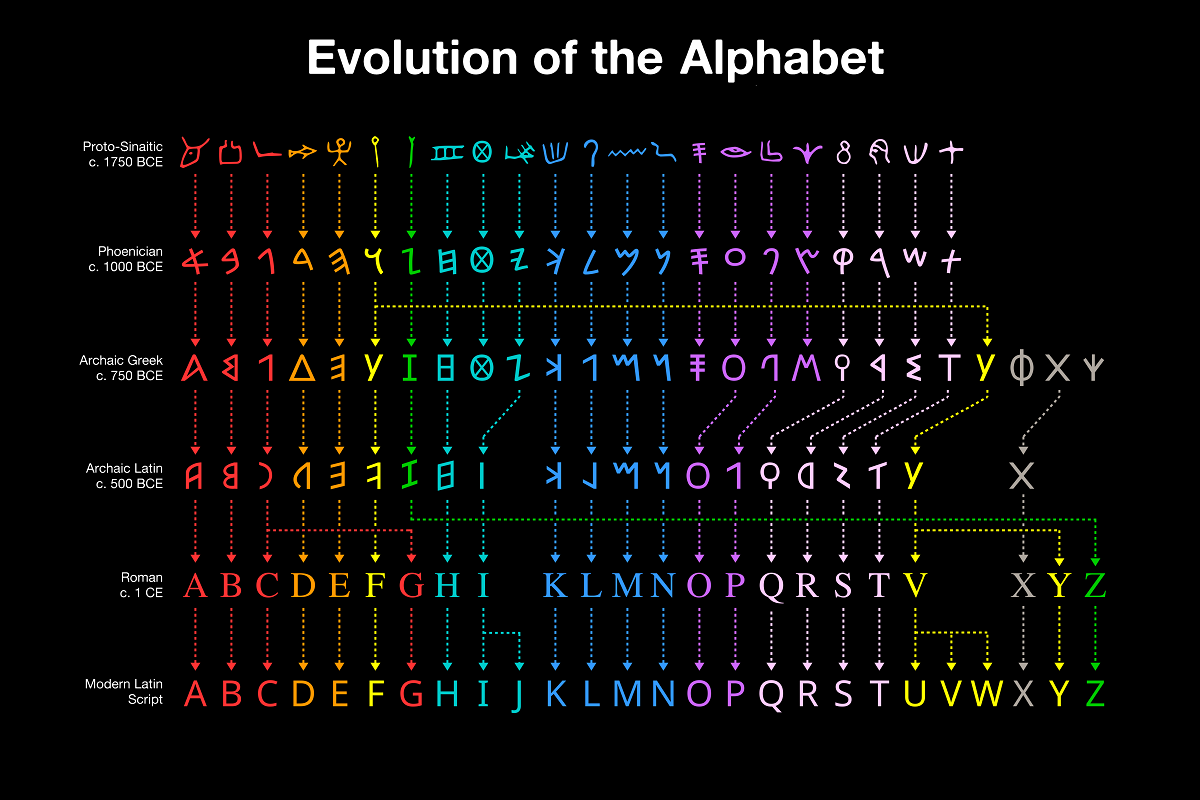The Alphabet
The English alphabet can be traced back to ancient Egypt.

Key words
- Pictogram: a picture or symbol that represents a word, phrase, or idea
A computer icon is a small pictogram.
- Ox: a bull / male cow
Oxen are castrated to make them docile.
- Semitic: Semitic languages are a group of languages that include Hebrew, Arabic, and Aramaic
The earliest known alphabet was North Semitic, developed in the 2nd century BC in Palestine and Syria.
- Suit: to be convenient and cause the least difficulty for someone
We could go now or this afternoon - whatever time suits you best.
- form the basis: the most important facts, ideas, etc. from which something is developed
This document will form the basis for our discussion.
Read the article to find the answers
- What did the English letter 'A' originally represent?
- Who was inspired by the Egyptian hieroglyphic system?
- Which two sounds were represented by the letter "f" in Old English?
- Why did ⟨Y⟩ replace ⟨Þ⟩?
Egyptian Origins
The origins of the English alphabet can be traced back to the ancient Egyptians, who used hieroglyphs both as pictograms to represent whole words and as symbols to represent individual sounds. The English letter 'A', for example, began as a hieroglyph representing an ox.
The Canaanites, early Semitic peoples, were inspired by the Egyptian hieroglyphic system and adapted it to their own Semitic language. They chose hieroglyphs such as the ox symbol for the letter 'Aleph', the first letter of the Hebrew alphabet.
The Phoenicians, ancient Lebanese, further refined the symbol before passing it on to the Greeks, who renamed it 'Alpha'. The Etruscans, ancient Italians, received the 'Alpha' along with all the other letters from the Greeks, modifying the shapes and names to suit their language.
Finally, the Romans received the alphabet from the Etruscans and made minor adjustments to the shapes before adopting it into their own writing system. This version of the alphabet has remained largely unchanged since then and forms the basis of the modern Latin (English) alphabet.
Anglo-Norman
The distinction between the sounds of 'v' and 'f' in English developed over time, particularly after the Norman Conquest of England in 1066. Before this time, Old English had two sounds represented by the letter "f". One sound was similar to the modern "v" sound, while the other sound was similar to the modern "f" sound.
After the Norman Conquest, French influence led to changes in the English language. The Normans assigned the sound "v" to the letter "v" to distinguish it from the existing sound "f". This distinction became important for distinguishing words such as "half" and "halves" or "wolf" and "wolves".
Ye
'Thorn' (Þ, þ) is the Anglo-Saxon letter that was pronounced like the 'th' in 'the'. It began to disappear from the English language after William Caxton introduced the printing press to England. It was replaced by ⟨y⟩, leading to the common 'ye', as in 'Ye Olde Chesire Cheese'. This change in the English language was due to the technology available at the time, the printing press had a ⟨Y⟩ but not a ⟨Þ⟩.
In the 17th century, "ye" was pronounced in the same way as "the" is pronounced today. Only recently has it been pronounced "yeee".
Discussion questions
- Do you have any questions about any of the vocabulary or grammar in this article?
- What are the roots of your alphabet?
- How many stages of development has it gone through?
- Has technology such as the printing press changed your alphabet?

Book a Lesson
Improve your English language communication skills by practicing with a qualified and experienced native speaker.





